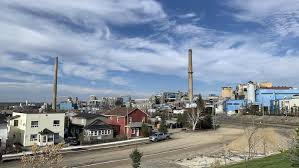Challenges Faced by Fonderie Horne in Rouyn Noranda

Introduction
Fonderie Horne, a prominent copper smelter located in Rouyn Noranda, Quebec, has long been a cornerstone of the local economy. Established in 1927, the facility has played a vital role in the region’s industrial landscape by providing jobs and stimulating economic growth. However, its operations have also raised significant concerns regarding environmental and public health issues, making its future a pressing topic of discussion.
Current Issues and Community Concerns
Recently, Fonderie Horne has been under scrutiny due to reported cases of elevated arsenic levels in the surrounding environment and its potential impact on residents’ health. According to local health reports, several residents have expressed worries over respiratory issues and other health complications linked to emissions from the smelter.
The Government of Quebec is actively investigating the environmental ramifications of Fonderie Horne’s operations, with recent studies indicating that pollution levels in the vicinity exceed recommended limits. Community groups have called for increased transparency and stricter regulations to ensure a safe living environment for the residents of Rouyn Noranda.
Recent Developments
In response to the growing concerns, Fonderie Horne management has announced its commitment to reducing emissions and improving operational efficiency. In September 2023, the company unveiled a multi-million-dollar investment aimed at modernizing its facilities and integrating advanced technologies to lower its environmental footprint.
Additionally, a recent town hall meeting held in early October allowed community members to voice their concerns directly to plant officials and local government representatives. Many expressed hope that ongoing dialogue would lead to a roadmap for sustainable operations that align with public health interests.
The Road Ahead
The future of Fonderie Horne is being closely watched by local stakeholders and environmental organizations alike. Experts predict that to maintain operations while addressing community concerns, Fonderie Horne will need to adopt more stringent sustainability practices. The outcome of ongoing studies and community engagement initiatives could set a precedent for industrial operations across Canada striving to balance economic imperatives with environmental stewardship.
Conclusion
The situation at Fonderie Horne in Rouyn Noranda exemplifies the complex challenges faced by industrial entities today. As the facility seeks to navigate regulatory scrutiny and community relations, its approach may significantly influence public perception and the future landscape of industrial operations in Canada. As developments unfold, it remains essential for local citizens to stay informed and engaged in conversations about their health and environment.









